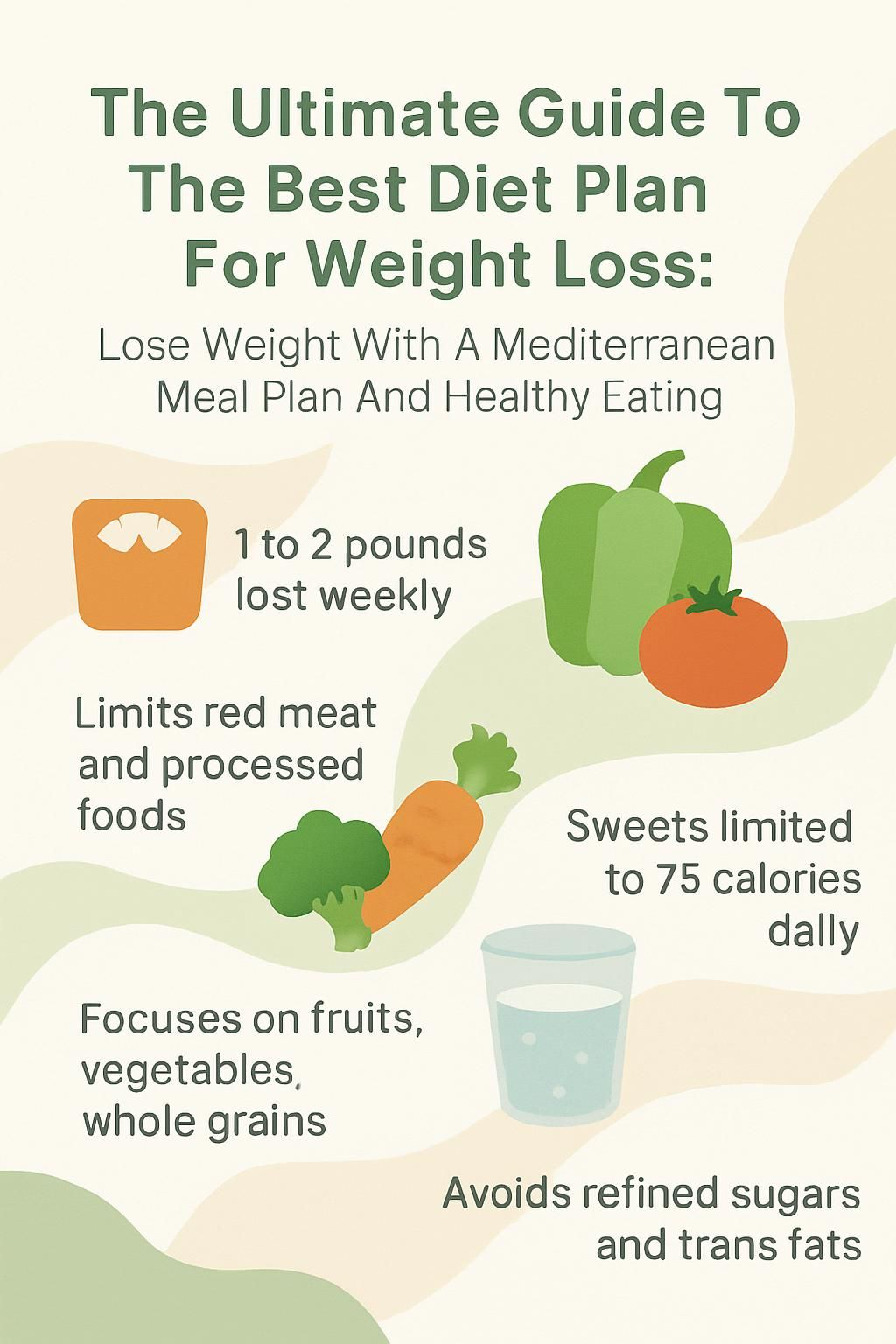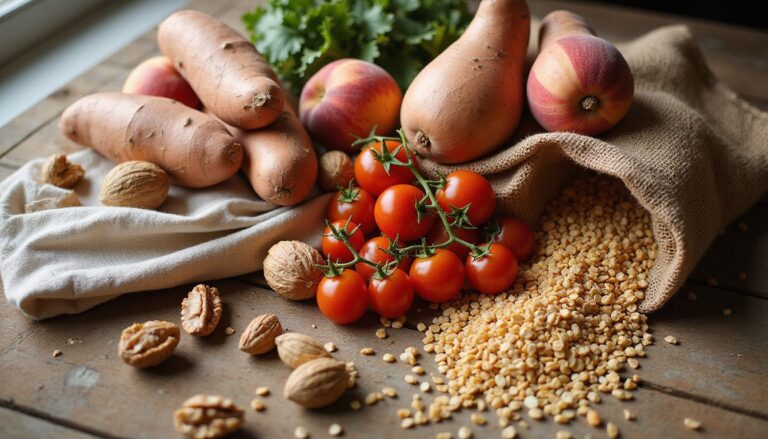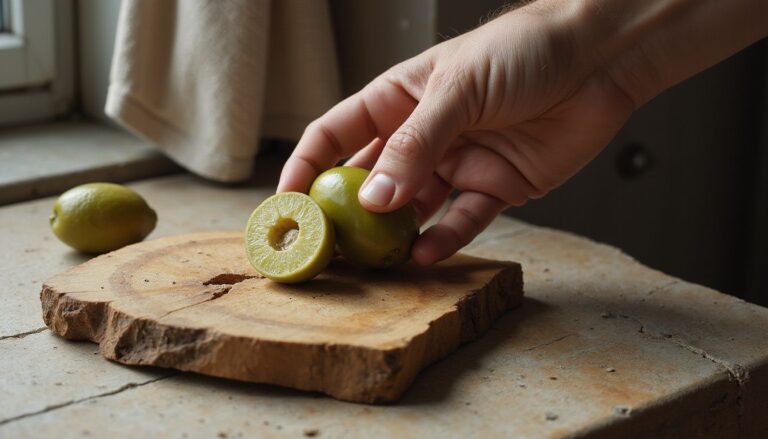The Ultimate Guide To The Best Diet Plan For Weight Loss: Lose Weight With A Mediterranean Meal Plan And Healthy Eating
Our Nutrition Assistant AI Suite will transform your body. You will lose fat, get toned, and build muscle. Gain confidence and optimal health.
If you struggle to lose weight and keep it off, picking a diet plan can feel confusing. Many studies suggest a Mediterranean diet supports healthy eating and steady weight loss. This guide shows how a Mediterranean meal plan works, what to eat, how to manage portions, and simple habits that lead to real change. If you want practical steps that fit daily life, you are in the right place.
Keep reading for clear, doable ideas that help you reach your health goals.
Key Takeaways
- The Mediterranean diet centers on fruits, vegetables, whole grains, beans, nuts, and extra virgin olive oil, with limited red meat and processed foods.
- Large studies from Mayo Clinic and Harvard link this pattern with lower risks of heart disease, type 2 diabetes, stroke, and some cancers when followed long term.
- A safe pace is 1 to 2 pounds per week; you get there with portion control plus daily physical activity.
- Helpful guideposts include around 4 ounces of fish or chicken per meal, and sweets capped near 75 calories per day.
- Limiting refined sugars, trans fats, excess animal fat, and packaged snacks can reduce blood pressure and support weight management, based on American Cancer Society guidance (updated March 4, 2021).

Why Are Balanced Nutrition and Exercise Important for Weight Loss?

Balanced nutrition and regular movement work together. They help you lose weight and protect your progress. You need both for lasting results.
What Does Balanced Nutrition Mean?
Balanced nutrition means eating from all food groups in the right amounts. Fill half your plate with vegetables and fruits to supply vitamins and dietary fiber. Add whole grains, such as brown rice and oats, for steady energy and digestive health.
Choose lean proteins like fish, beans, yogurt, or nuts to support fullness and preserve muscle while losing weight. Healthy fats matter as well. Use extra virgin olive oil in place of butter, and enjoy small servings of nuts and seeds to support heart health while keeping saturated fat low.
You do not need to cut entire food groups to follow a balanced eating plan. Some people notice gas or bloating when fiber goes up quickly. This is common and often fades as your body adapts.
Choosing colorful fruits and veggies each day made my own eating habits feel flexible instead of strict.
A balanced plan gives you steady energy and helps you control calories per day without skipping key nutrients.
How Does Physical Activity Help You Lose Weight?
Physical activity burns calories, which helps you create the calorie deficit needed for weight loss. Aim for at least 30 minutes of exercise most days. This supports weight loss and helps prevent regain.
Walking is simple and supports fat burning while lifting mood. Resistance exercise builds muscle. Muscle tissue uses more calories at rest, which helps weight management.
Move more and sit less throughout the day. Those small bursts add up. Talk with a health professional before starting a new routine if you have health conditions such as high blood pressure or obesity.
In early stages like the LOSE IT! phase, food changes drive faster results; over time, exercise becomes essential for maintaining weight loss.
Next, explore what defines the Mediterranean diet and why its food choices support results you can keep.
What Is the Mediterranean Diet?
The Mediterranean diet focuses on plant foods and healthy fats. This way of eating links to lower risk for heart disease, type 2 diabetes, and some cancers.
Where Did the Mediterranean Diet Originate?
This pattern reflects traditional meals from countries near the Mediterranean Sea, including Greece, Italy, and Spain. Families relied on local produce, beans, whole grains, olive oil, and seafood.
The Mayo Clinic highlights this style because it features plentiful vegetables and fruits, olive oil, beans, fish, whole grains, and nuts. Recipes are simple, with fresh ingredients and minimal processing. Healthy fats like extra virgin olive oil became staples instead of butter or lard due to local customs.
I tried a classic meal in southern Italy, and even a basic drizzle of olive oil tasted rich and clean. That simple approach shapes modern meal plans today.
What Are the Core Principles of the Mediterranean Diet?
Vegetables and fruits form the base of your plate. Whole grains, beans, nuts, fish, and healthy fats round it out. Olive oil is the main fat instead of butter or other high saturated fat choices.
This plan includes lean animal proteins like fish and flexible plant proteins, such as lentils and beans. Processed foods and high-calorie snacks sit at the top of the Healthy Weight Pyramid. You eat those rarely.
Meals bring fiber for fullness, lean protein for muscle, and healthy fats for heart health. Mindful eating helps too. Try to avoid screens during meals. Calorie targets can fit many needs, often between 1,200 and 1,800 calories per day.
These principles encourage steady progress, which is easier to keep long term.
How Does the Mediterranean Diet Support Weight Loss?
This plan builds healthy eating habits that help you reach weight loss goals. Reviews and meta-analyses link it to lower cardiovascular disease risk and better markers of health.
How Does It Promote Long-Term Health?
Eating this way can lower your risk for diabetes, heart disease, and high blood pressure. More vegetables, fruits, and whole grains reduce risk factors for chronic disease.
Many studies show improved heart and blood vessel health. Benefits may include lower stroke risk and better sleep apnea symptoms.
Losing excess weight through this pattern also helps conditions such as hypertension and type 2 diabetes. The plan uses behavior change strategies, which make habits stick for life.
It is flexible. You can adjust food choices to fit taste, culture, or medical needs while still supporting weight loss.
Why Does It Encourage Steady Weight Loss?
This plan favors gradual change instead of quick fixes. The LIVE IT! phase targets a safe rate of 1 to 2 pounds per week, which helps prevent rebound weight gain.
Very-low-calorie diets, which drop below 800 calories, need medical supervision. The Mediterranean plan avoids that extreme. It keeps balance, so your body avoids the stress responses common with crash diets.
Because you build healthy routines instead of relying on short bursts, you reduce weight cycling, also called yo-yo dieting. In my experience, following moderate portions felt less stressful than low-fat fads I tried before.
Your body adapts slowly, so you can keep the weight off without feeling deprived. If you are active, you can scale portions while staying focused on whole foods like vegetables, fruits, lean proteins, nuts, and olive oil. That is a major reason this plan ranks high for successful weight loss.
How Does It Reduce Chronic Disease Risks?
The Mediterranean diet can lower risk for diabetes, heart disease, and some cancers. You build meals with fruits, vegetables, whole grains, and healthy fats such as olive oil and nuts.
Harvard research links a high-fiber diet to better digestion and more stable blood sugar. Limiting processed foods, refined sugars, and red meat helps lower risk factors for coronary artery disease.
Swapping saturated fats for extra virgin olive oil can improve cholesterol levels. The Mayo Clinic notes this eating pattern may reduce heart attack risk and help keep blood pressure lower over time.
People with obesity or those at risk for type 2 diabetes benefit from nutrient-dense meals that support weight loss without severe calorie cuts. American Cancer Society guidance also suggests limiting red meat to support cancer prevention.
What Foods Should You Eat on the Mediterranean Diet?
A Mediterranean meal plan favors whole foods and balance. It supports weight loss and may reduce risk for type 2 diabetes and heart disease, while keeping meals satisfying.
Which Vegetables, Fruits, and Whole Grains Are Recommended?
Plant foods are the foundation. They are high in fiber and low in calories, which supports fat loss in a safe way.
- Leafy greens: spinach, kale, arugula, and Swiss chard. These are great salad bases for weight-loss plans.
- Colorful vegetables: broccoli, butternut squash, tomatoes, eggplant, zucchini, and bell peppers. Add 1 cup as a side at dinner.
- Fresh fruits: grapes, kiwis, clementines, oranges, pears, and bananas. Choose whole fruit for snacks or dessert.
- Berries: strawberries and blueberries in overnight oats or yogurt parfaits.
- Whole grains: quinoa and couscous for lasting energy and fullness in sample meal plans.
- High-fiber cereals: bran flakes at breakfast. A 3/4 cup serving with a banana is filling and low in saturated fat.
- Legumes: white beans in soups or salads add protein without many calories. Tuscan white bean soup is about 290 calories per serving.
- Whole grain bread or whole wheat pita: use for sandwiches or veggie pitas to support digestive health and steady progress.
These foods deliver nutrients that lower risks for type 2 diabetes and cardiovascular disease, while keeping your menu varied and enjoyable.
What Are Healthy Fats in This Diet?
Healthy fats are a key part of this weight loss diet. They help with fullness and support heart health.
- Extra virgin olive oil as the main cooking and dressing fat. It provides monounsaturated fats that can reduce heart disease risk and replace butter used sparingly.
- Nuts and seeds: almonds, walnuts, and pumpkin seeds. They add unsaturated fats, protein, and fiber, helpful for people with diabetes working to lose weight.
- Avocados and nut butters: add to meals or snacks. Avocados supply potassium and healthy fats; nut butter on whole grain toast gives steady energy without trans fats.
- Portion ideas: drizzle 1.5 teaspoons of olive oil on salads, or sauté spinach in 1 tablespoon of olive oil for flavor and satiety.
- Fatty fish: salmon or sardines each week instead of red meat. Omega-3 fats in fish support heart health in randomized trials.
- Avoid trans fats and limit high saturated fat foods. This lowers cardiovascular risk and supports long-term health.
- I swapped butter for olive oil in my child’s sandwiches. The taste was subtle, and our pediatrician praised the shift at the next visit.
Using these fats supports weight management and aligns with evidence showing lower chronic disease risk.
Which Lean Proteins Are Included?
Lean protein supports weight loss and helps prevent muscle loss while losing fat. The Mediterranean diet offers many options for both plant-based and non-vegetarian styles.
- Fish such as flounder, salmon, or shrimp at least twice a week to support heart health.
- Poultry like roast chicken or turkey breast. Aim for 4-ounce servings.
- Eggs, including egg whites to reduce cholesterol. Pair with vegetables at breakfast.
- Plant proteins: beans, lentils, tofu, or nuts for fiber and fullness in salads or grain bowls.
- Greek yogurt, cottage cheese, mozzarella, and reduced-fat cheese for protein and calcium. Choose unflavored to limit added sugars.
- Veggie burgers made from beans for an easy meatless lunch.
- Lean pork tenderloin, about 4 ounces per serving, for variety with less saturated fat.
- Some plans allow up to 15 ounces of protein per meal if your needs are higher, for example athletes. Follow your plan and monitor how you feel.
- Mixing animal and plant proteins can improve fullness and energy during weight loss.
- In my experience, combining both protein types managed hunger better than relying on only one.
What Foods Should You Avoid on the Mediterranean Diet?
Certain foods can slow your progress. Limiting them makes your results more consistent.
Why Avoid Processed Foods?
Processed foods often carry unhealthy fats, added sugars, and excess sodium. Reducing packaged snacks removes these from your daily meals.
The American Cancer Society notes that limiting processed foods can lower the risk of obesity and hypertension. Packaged meals tend to be calorie dense and light on nutrients, which may lead to weight regain or emotional eating.
Mediterranean recipes highlight fresh or frozen vegetables, fruits, nuts, whole grains, and lean proteins. This swap supports a healthy way to lose weight and reduces risks tied to refined grains and salty foodservice products seen in many countries.
Why Limit Refined Sugars and Grains?
Refined sugars and grains add extra calories and can raise blood sugar and triglycerides. This plan prefers whole grains, such as multigrain toast or whole wheat pita, rather than white bread and pasta.
Higher fiber helps digestion and improves fullness. Natural sugars come mainly from fruit, while sweets are limited to about 75 calories per day and saved for special moments.
Recipes skip high-sugar, low-fiber items like sugary yogurt or breakfast cereals. Research shows higher fiber supports weight control better than processed carbohydrates.
If you live with diabetes, ask your doctor how to adjust fruit and grain servings. Both affect blood sugar even in a healthy eating plan.
How Much Red Meat Is Too Much?
Reducing refined carbs sets a helpful base for heart health. Cutting back on red meat is another core step. Many Mediterranean breakfasts and lunches skip beef or lamb.
Instead, focus on fish, poultry, beans, nuts, and plant proteins. Have small servings of lean meats like pork tenderloin on occasion, not every day. The American Cancer Society advises limiting red meat to help lower cancer risk.
Aim for 4-ounce portions when you choose red meat. Picking fish or chicken more often helps reduce saturated fat and long-term disease risk while keeping your plan flexible.
How to Create a Mediterranean Meal Plan for Weight Loss
Planning ahead helps you burn fat and keep nutrition balanced. This style also adapts to low-fat or vegetarian preferences as needed.
Why Is Portion Control Important?
Portion control prevents overeating and supports steady weight loss. The plan often uses guidance like 4 ounces of fish or poultry per meal. Clear serving sizes for grains, dairy, and vegetables make choices easier.
Sweets are capped at 75 calories per day, which keeps sugar intake in check while allowing small treats. The LIVE IT! phase blends smart food choices with structure and portion awareness.
The Healthy Weight Pyramid emphasizes filling up on low-calorie foods near the base, such as vegetables and fruits. You can reach a healthy goal of losing about one or two pounds each week with consistent portion control.
Using a small digital scale helped me track protein and nuts accurately each day. Once portions are in place, adding variety becomes simple.
How Can You Add Variety to Your Meals?
Portion control sets the base. Variety keeps you satisfied and meeting your nutrient needs. Rotate proteins across the week: turkey, chicken, fish, eggs, beans, tofu, and pork.
Mix vegetables like broccoli, spinach, bell peppers, cucumbers, and butternut squash. Swap fruits, such as bananas at breakfast and grapes or kiwis for snacks.
Change textures. Alternate oats with yogurt bowls, or try whole-wheat waffles some mornings. For lunch, switch between hearty soups and fresh salads or a grilled vegetable quesadilla with cottage cheese.
Dinner can vary from Mediterranean-inspired grilled fish to barbecue chicken or jambalaya made with lean sausage substitutes. Snack on raw vegetables with yogurt dip or a homemade snack bar. Research on DASH-style diets shows diverse meals help people stay engaged and make progress.
I like buying in-season produce. It keeps flavor high and costs lower, which makes staying consistent easier.
What Does a 7-Day Mediterranean Meal Plan Look Like?
A seven-day plan gives you structure and flexibility. It blends healthy eating, physical activity, and simple stress control so you can keep going week after week.
What Are Some Breakfast, Lunch, and Dinner Ideas for Day 1?
Start strong with balanced meals that support your weight loss goals.
- Breakfast: 3/4 cup bran flakes, 1 banana, and 1 cup fat-free milk for fiber and protein.
- Lunch: mini whole wheat pita with 3 ounces turkey breast, half a roasted pepper, 1 teaspoon mayo, mustard, lettuce, 1 mozzarella stick, and two kiwis.
- Option: veggie niçoise pitas around 290 calories each, using fresh vegetables and lean proteins.
- Dinner: 4 ounces flounder in lemon-herb sauce, plus 1 cup couscous and 1 cup broccoli.
- Dessert: a single-serve ice cream to satisfy a sweet craving without overshooting calories.
- These meals support steady energy and help manage daily stress.
- This pattern aligns with health information linking Mediterranean eating to long-term heart health.
Use the next days for more ideas that deliver variety while staying on track.
What Are Some Breakfast, Lunch, and Dinner Ideas for Day 2?
Keep meals simple and filling to support weight loss and healthy eating.
- Breakfast smoothie with 1 cup berries, half a banana, and 8 ounces milk. Add 1 or 2 hard-boiled eggs for protein.
- Lunch: 1 cup vegetable soup, a veggie burger on whole-grain toast or an English muffin, and 1 cup grapes.
- Dinner: barbecue cutlets, about 265 calories. Add orange slices, sautéed spinach with garlic and tomatoes in olive oil, and half a baked potato.
- Drink water throughout the day. Hydration can reduce cravings and support weight loss.
- Choose snacks like cut vegetables or a small piece of fruit between meals.
- Add a brisk walk after dinner to aid digestion and build a routine.
- Use extra virgin olive oil for salads and cooking to add healthy fats linked to lower chronic disease risk.
These ideas use portion control and balanced nutrition, which are safer than extreme dieting or surgery options for most people.
What Are Some Breakfast, Lunch, and Dinner Ideas for Day 3?
Day 3 stays simple, tasty, and balanced to support your goals.
- Breakfast: 1/2 cup oats cooked in milk or fortified soy milk with 1/2 sliced apple, 1 teaspoon honey, and cinnamon.
- Lunch: chicken salad with 4 ounces chopped cooked chicken breast, 1/4 cup grapes, 1 tablespoon almonds, 1/4 cup celery, and a dressing of 1 tablespoon mayo plus 1 tablespoon Greek yogurt. Serve over lettuce with one slice multigrain toast.
- Dinner: 4 ounces shrimp with a baked potato topped with salsa and Greek yogurt, plus three cups sautéed spinach in olive oil.
- Dessert: one ounce dark chocolate or an ice cream bar with 100 to 150 calories.
- Drink water with each meal to support fullness and digestion.
- Use extra virgin olive oil as your main fat source to support heart health.
- Stick with portions to keep calorie intake balanced for steady results.
I follow a version of this on busy weeks. Lighter meals kept my focus steady and reduced mid-afternoon slumps.
What Are Some Breakfast, Lunch, and Dinner Ideas for Day 4?
These choices are simple to prepare and bring strong nutrition.
- Breakfast: 1 cup plain or low-sugar Greek yogurt with 1 cup fresh berries for protein and antioxidants.
- Lunch: 1 cup tomato soup and a mini whole-wheat pita with 3 ounces roast beef, 1 teaspoon horseradish, mustard, lettuce, and tomato. Add 2 cups raw vegetables and 1/4 cup hummus.
- Choose whole grains like quinoa or brown rice at lunch and dinner, about 1 cup per meal.
- Dinner: poached 4-ounce salmon with a slaw of 1.25 cups coleslaw mix, chopped scallions, 1 tablespoon rice vinegar, and 1.5 teaspoons olive oil.
- Work in colorful fruits and leafy greens throughout the day to raise fiber.
- Use extra virgin olive oil to season salads or cooked grains.
- Drink water often. Aim for at least eight cups to support metabolism.
These steps make it easier to stick with your goals through the week.
What Are Some Breakfast, Lunch, and Dinner Ideas for Day 5?
Day 5 balances protein, fiber, and healthy fats to keep energy steady.
- Breakfast: 1 cup Cheerios with 1/2 cup berries, 1 tablespoon almonds, and 6 ounces Greek yogurt.
- Lunch: mushroom quesadillas on whole wheat tortillas with sliced cucumber spears.
- Add 1/2 cup cottage cheese or Greek yogurt and two clementines for vitamin C and protein.
- Dinner: balsamic-glazed pork tenderloin at about 370 calories per serving.
- Side: roasted butternut squash for fiber and vitamin A.
- Focus on unprocessed foods like vegetables, fruits, lean proteins, whole grains, yogurt, nuts, and olive oil.
- Drink water before each meal to support digestion and reduce snacking.
These choices fit evidence-based plans that lower chronic disease risk while making weight management easier.
What Are Some Breakfast, Lunch, and Dinner Ideas for Day 6?
Day 6 keeps things simple and on track for weight loss.
- Breakfast: whole-grain waffle topped with two tablespoons nut butter.
- Add one sliced banana with a light sprinkle of cinnamon and nutmeg.
- Drink 8 ounces milk for calcium and protein.
- Lunch: tuna salad mixed with light mayo or plain Greek yogurt, about 135 calories per serving.
- Side: ten baby carrots for crunch and fiber.
- Also have two-thirds cup Greek yogurt for protein and probiotics.
- Add one pear for a natural sweet finish.
- Dinner: spicy sausage jambalaya using brown rice, lean sausage, tomatoes, onion, and bell peppers.
- Side: sauté three cups spinach in one tablespoon olive oil with garlic.
- Drink water during the day to support hydration and digestion.
- Meal prepping these choices ahead saved me time and cut down on random snacking.
What Are Some Breakfast, Lunch, and Dinner Ideas for Day 7?
Day 7 keeps your menu fresh with nutrient-dense options and healthy fats.
- Breakfast: half an English muffin with one ounce reduced-fat cheese, a tomato slice, and spinach, topped with a poached egg. Add one grapefruit.
- Lunch: black bean salad with 1/2 cup beans, 1/2 cup orange slices, chopped red pepper, onion, and scallions plus 1 teaspoon vinegar. Pair with leafy greens, one corn tortilla, and a piece of fruit.
- Dinner: baked salmon drizzled with extra virgin olive oil over quinoa with steamed broccoli or spinach. Add lemon juice for flavor and vitamin C.
- Snacks: low-fat Greek yogurt or hummus with celery sticks for protein and fullness.
- Hydrate well. Aim for eight cups of water each day to support weight loss.
- Choose raw vegetables like peppers or cucumbers after dinner if you want a second snack.
- Add a small handful of unsalted nuts for crunch and healthy fats.
I often batch-cook these on Sundays. Prepped meals make busy weekdays easier and help me stick to the plan.
How Do Other Popular Diets Compare to the Mediterranean Diet?
Comparing plans can help you spot what fits your lifestyle. Here are quick overviews to guide your choice.
What Are Low-Carb Diets?
Low-carb diets limit carbohydrates and emphasize foods like meat, fish, eggs, and some vegetables. Many versions exclude whole grains and legumes, which are important in the Mediterranean diet.
People often see fast early loss because the body uses stored energy when carbs are scarce. The Dietary Guidelines for Americans 2020 to 2025 support balanced eating instead of cutting whole food groups.
Restricting carbs may reduce fiber and key nutrients you would get from beans and grains. If you have health conditions or take certain medicines, you may need medical monitoring since low-carb plans affect blood sugar.
I tried a popular low-carb plan once. Quick results came with low variety and less nutritious food, so I felt tired. Compared with the Mayo Clinic Diet, which includes all food groups, I found it harder to keep up long term.
What Is Intermittent Fasting?
Intermittent fasting changes meal timing rather than food type. The 5:2 method means eating normally for five days and cutting calories sharply on two days each week. Another approach is 16:8 time-restricted eating, where you eat inside an eight-hour window daily.
Some people lose weight early, but long-term evidence is mixed. Quick loss can trigger body changes that make regain more likely later.
Children, teens, pregnant women, and older adults should avoid fasting unless a doctor says otherwise. The Mediterranean plan focuses on balanced daily meals instead of periods without food. Structured plans like the Mayo Clinic Diet ensure daily nutrition, which many fasting protocols do not.
How Do High-Protein Diets Work?
High-protein diets raise protein intake, sometimes cutting other food groups. Some plans go up to 15 ounces of protein per meal.
Extra protein can reduce hunger and may spark early loss. Many plans include both animal and plant proteins, which helps with variety.
These diets can be less balanced than the Mediterranean plan. You may miss fiber and other nutrients found in vegetables and whole grains. Dietitians often suggest pairing lean proteins with high-fiber foods for better results.
From my experience, strict high-protein days left me tired. I felt more stable when I included plenty of greens and grains with protein.
What Tips Can Help You Succeed with the Mediterranean Diet?
Simple habits make this plan easier to follow. Here are ideas you can use right away.
How Can Meal Prepping Make This Diet Easier?
Meal prepping removes friction. Make snack boxes with nuts, fruit, or yogurt parfaits so you skip convenience foods when hungry.
Portion out lunches and dinners for several days using recipes from your plan. Shop once and cook in batches. This improves variety, cuts waste, and saves money on staples like grains, vegetables, and lean proteins.
A 7-day plan helps you build a shopping list and stay consistent. Batch cooking helped me avoid takeout after late workdays and kept my portions on track.
Consistency with portions and ingredients supports steady loss and aligns with evidence-based Mediterranean patterns.
Why Is Staying Hydrated Important?
Water supports weight loss, digestion, and nutrient absorption. It also helps workouts feel better and can reduce fatigue.
Thirst often feels like hunger. Drinking water before meals may lower calorie intake. On this plan, you also get fluids from fruits, vegetables, soups, and herbal tea.
I began making cucumber salads and sipping chamomile tea in the evening. I felt refreshed and had fewer cravings during my weight loss journey.
Good hydration supports mental focus and mood during change, which helps you stick with new habits.
How Does Combining Diet with Exercise Help?
A healthy diet plus regular exercise supports slow, steady loss and protects muscle. Aim for at least 30 minutes of activity most days.
Research suggests losing about 0.5 to 1 pound weekly lowers risks tied to rapid losses. Movement also supports heart health and makes weight maintenance easier.
Staying active helped me keep off pounds after I reached my target on a Mediterranean meal plan. Food and movement work best as a team, not as stand-alone fixes.
Talk with your clinician if you have medical issues or take medications. Personalized guidance keeps changes safe.
What Are Common Questions About the Mediterranean Diet?
You may wonder how this plan fits different lifestyles and needs. These answers can help you adapt it with confidence.
Can the Mediterranean Diet Be Vegetarian or Gluten-Free?
Yes. A vegetarian version uses fruits, vegetables, nuts, seeds, legumes, and olive oil. Replace animal protein with beans or lentils. Low-fat dairy can add protein if you choose a lacto-vegetarian approach.
For gluten-free needs, use grains like quinoa and rice instead of wheat-based bread or pasta. Pick whole foods in simple forms to avoid hidden gluten.
A structured plan keeps meals balanced while supporting conditions such as diabetes or high cholesterol. Many people see gradual weight loss and long-term health gains in studies from 2022 and 2023.*
*For further reading or references: Harvard T.H. Chan School of Public Health.
Is Extra Virgin Olive Oil Essential?
Extra virgin olive oil is a cornerstone of this plan. Using it as your main fat can lower risk of diabetes, heart disease, and high blood pressure in research.
This oil is rich in unsaturated fats, which support heart health more than saturated fats from butter or margarine. Most Mediterranean recipes use it for flavor and nutrition.
It also supports weight loss by replacing less healthy fats while keeping taste high. You get control of calories without giving up satisfaction.
How Does This Diet Support Heart Health?
You will eat healthy fats from olive oil, nuts, and fish, which can lower LDL cholesterol, the less healthy type. The plan is full of fruits and vegetables that add antioxidants, which help reduce inflammation.
Whole grains supply fiber that supports cholesterol control. Fatty fish such as salmon or mackerel provide omega-3 fats linked to a lower risk of heart disease. Red meat and processed foods are limited, which helps reduce cardiovascular risks.
Regular physical activity pairs with these choices to improve fitness and weight management over time.
What Are the Potential Risks or Challenges of the Mediterranean Diet?
Changing habits takes time. These tips reduce early hurdles so you can stay consistent.
How to Adjust to New Eating Habits?
Start with small, realistic shifts. Add a vegetable to dinner each night or switch butter to extra virgin olive oil for cooking. Use a weekly plan so you have structure and clear steps.
Increase fiber slowly to reduce gas or bloating. If you have diabetes or another condition, monitor your numbers and ask your healthcare provider for guidance.
Expect gradual progress. Steady change supports long-term results and helps prevent yo-yo dieting.
A friend moved away from drive-thru meals by prepping veggie-rich lunches on Sundays. Simple steps built confidence, and the routine lasted more than six months.
Summary: make small changes, plan your meals, raise fiber gradually, check health markers when needed, and set a pace you can maintain.
How to Manage Food Costs on This Diet?
Buy seasonal produce and seek deals at local markets. Keep low-cost staples on hand, including dried beans, brown rice, oats, and frozen vegetables.
Cook at home instead of eating out. Use a weekly Mediterranean plan to build a smart grocery list and avoid last-minute spending.
If you manage diabetes, balance fruit and starchy vegetables to control carbs and costs. Aim for a slow weight loss of 0.5 to 1 pound per week, which is safer and reduces expenses tied to rapid plans[1].
Build meals with legumes, bulk grains, lentils, leafy greens, eggs, canned sardines, or frozen spinach. Variety stays high, and your budget stays steady.
Conclusion
Choosing a Mediterranean meal plan for weight loss gives you a clear, sustainable path. You will eat more vegetables, fruits, whole grains, and healthy fats, while limiting processed foods. Daily physical activity supports steady progress and better health.
This plan fits busy schedules and can help reduce risks linked to heart disease and diabetes. Simple tools, such as meal prep and a weekly menu, help you track your journey without stress. With small steps, you can reach a healthy weight and protect your long-term well-being.
Medical disclaimer: This content is for education only. Speak with your healthcare provider before making major diet or exercise changes, especially if you have medical conditions or take prescription medications.
FAQs
1. What is the Mediterranean meal plan, and how does it help with weight loss?
The Mediterranean meal plan focuses on vegetables, fruits, whole grains, beans, nuts, olive oil, fish, and poultry. Studies show this eating pattern can support steady weight loss by reducing processed foods and added sugars while increasing fiber intake for better satiety.
2. Are there scientific studies supporting the effectiveness of a Mediterranean diet for healthy eating and losing weight?
Yes; research published in The New England Journal of Medicine found that people following a Mediterranean-style meal plan lost more body fat compared to those on low-fat diets. Other clinical trials confirm its benefits for heart health and long-term weight management.
3. How do I start using a Mediterranean meal plan for my own diet?
Begin by replacing red meat with seafood or chicken twice weekly; add fresh produce to every meal; use olive oil instead of butter; choose whole grain bread or pasta over refined options. My experience showed that planning meals ahead made it easier to stick with these changes.
4. What are the main nutritional benefits of choosing a Mediterranean approach over other popular diets?
A typical day includes high amounts of vitamins A and C from leafy greens plus omega-3 fatty acids from fish which support brain function as shown in recent nutrition data tables. This approach also limits saturated fats leading to improved cholesterol levels according to peer-reviewed sources.
Summary: The Mediterranean meal plan uses nutrient-rich ingredients proven by science to aid safe weight loss while promoting overall well-being through balanced nutrition choices supported by credible evidence.







